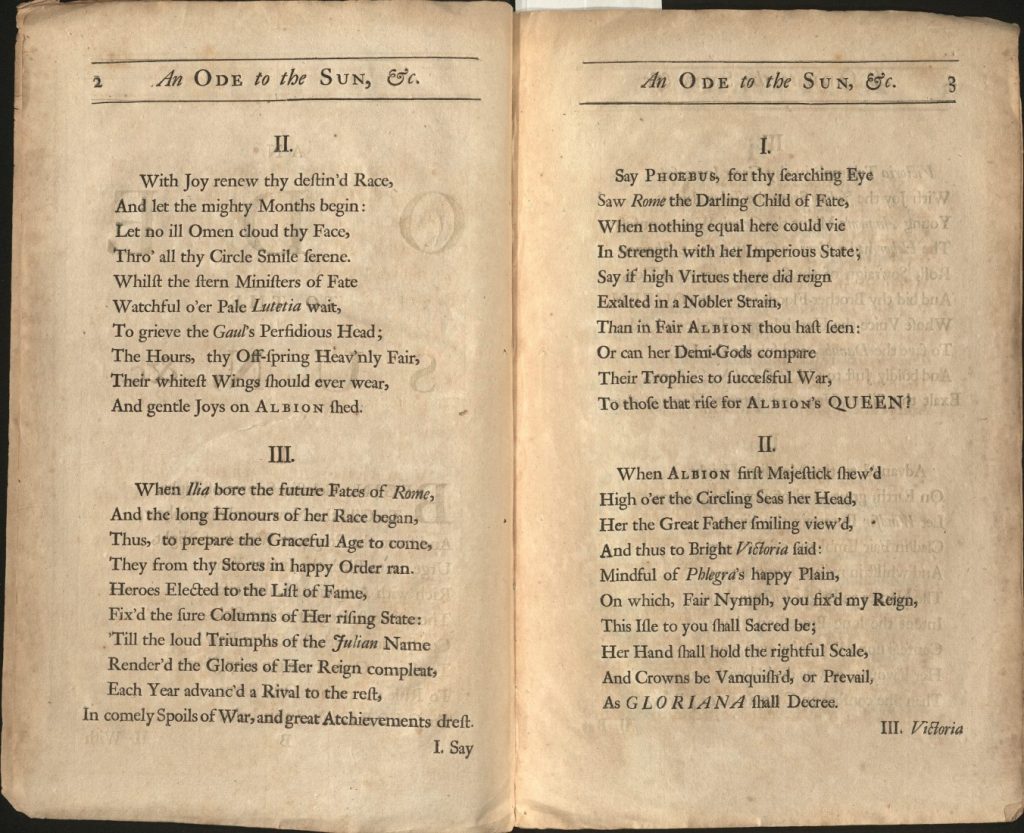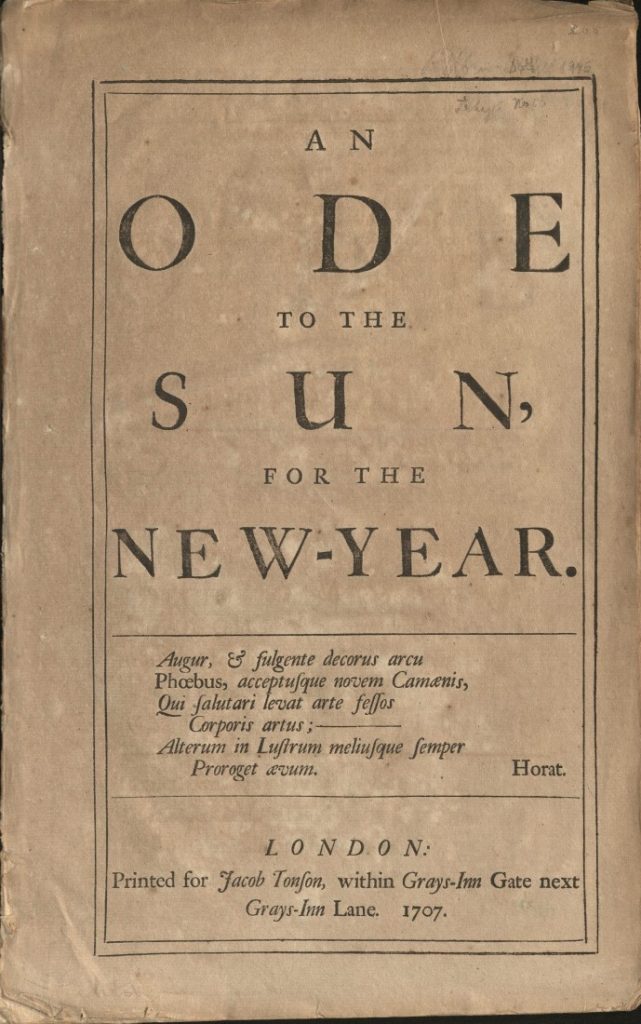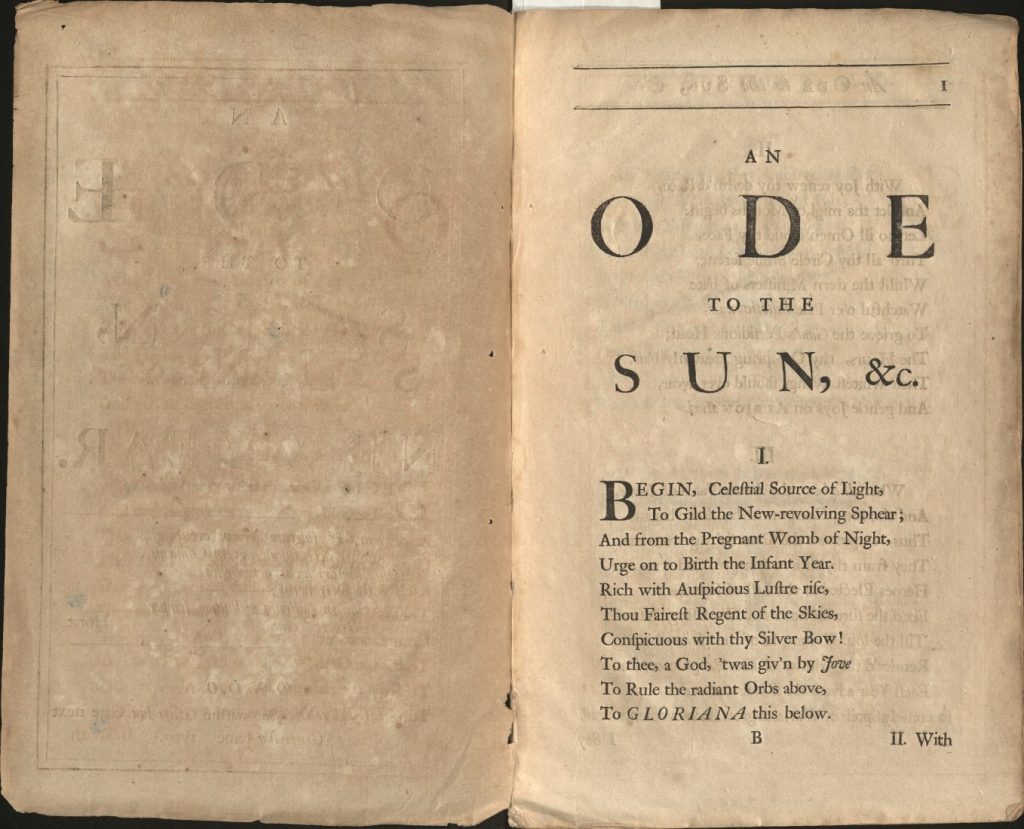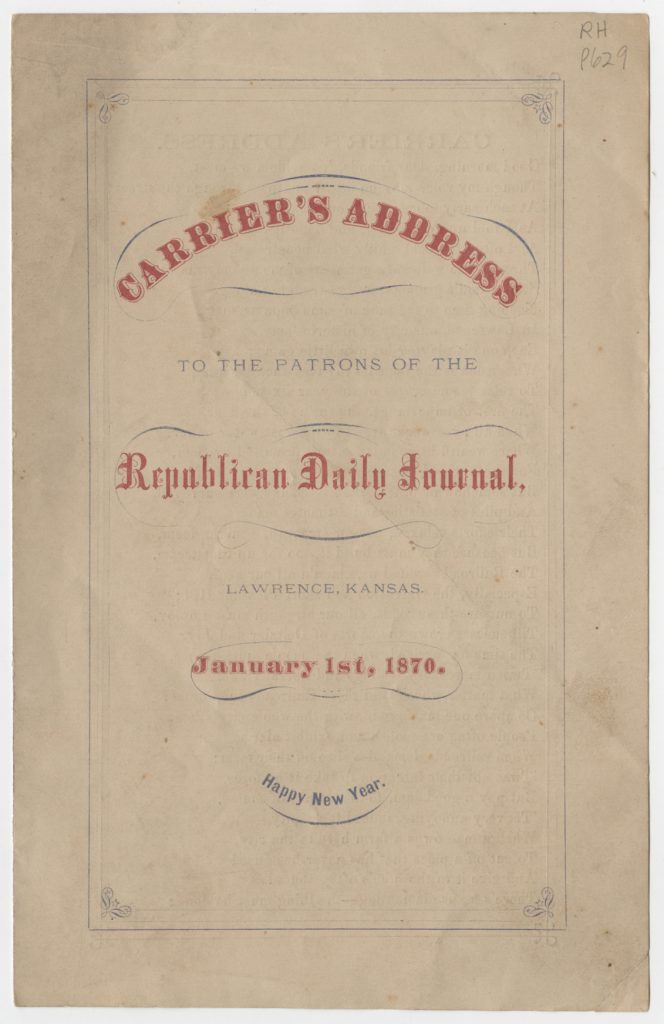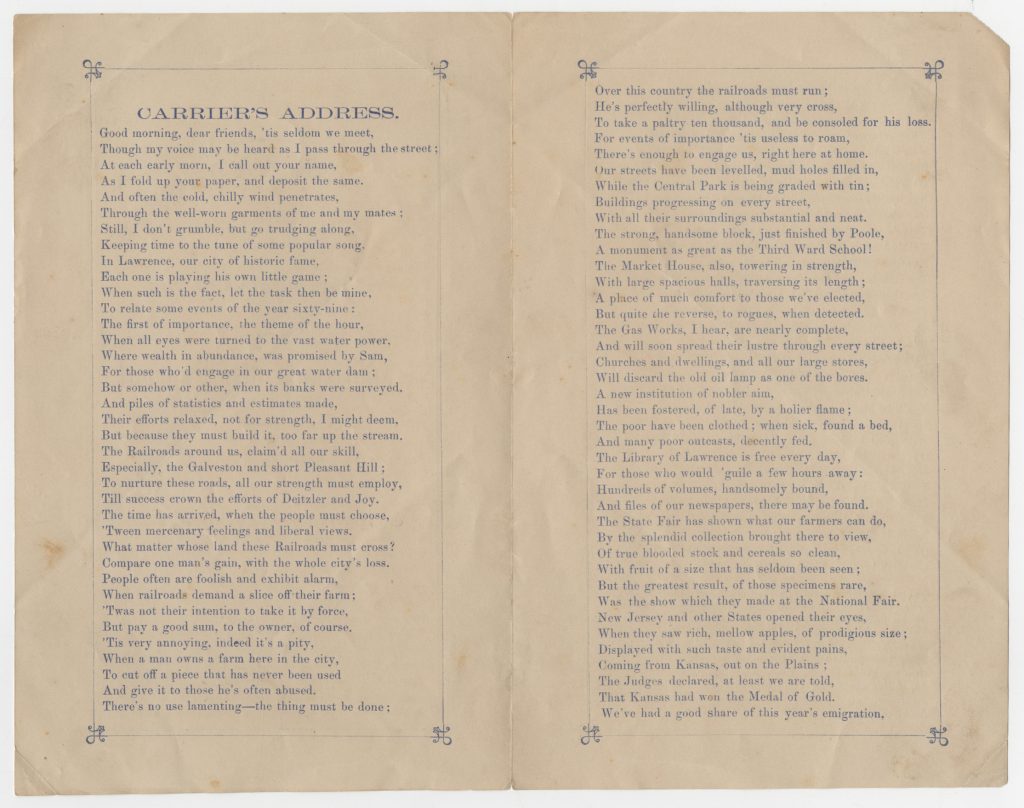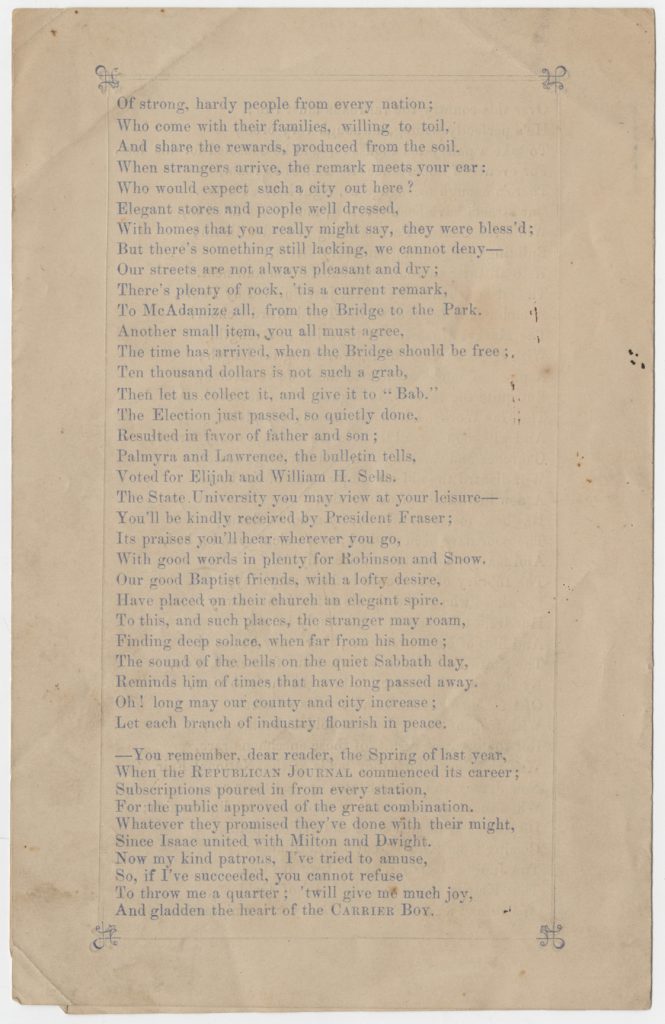According to Wikipedia, a New Year’s resolution is “a tradition, most common in the Western Hemisphere but also found in the Eastern Hemisphere, in which a person makes a promise to do an act of self-improvement or something slightly nice, such as opening doors for people, beginning from New Year’s Day.” In January 1864 Elizabeth Duncan wrote down her resolutions on the back pages of her new diary. Little did she know that 150 years later we would use her resolutions to gain insight into what it was like to be a women in the Midwest during her lifetime.

Photograph of Elizabeth Duncan, circa 1860-1865.
Ladies of Lawrence Portrait Album. Call Number: RH PH 51.
Click image to enlarge.
Wesley Duncan (1814-1902) and his second wife Elizabeth (1837-1879) became residents of Lawrence, Kansas, in May 1855, when the town was less than one year old. Wesley was in the dry goods and grocery business. In 1867 the family left Lawrence and traveled to California, where they briefly settled in San Jose. Sometime around 1868 they returned to Lawrence, and Wesley opened a hardware store.
Kenneth Spencer Research Library holds three of Elizabeth’s diaries, covering the years 1864, 1867, and 1868. The 1864 diary, shown here, was a gift to Elizabeth from her favorite nephew. On January 1st of that year she recorded that “This morning was intens[e]ly cold but I think some warmer than yesterday I wished all the folks a happy new year. About noon Fred Eggert…presented me this book which I value very highly.” The next day she wrote, in part, “I am going to try to live a more elevated life this year than I did last.”

The front cover of Elizabeth’s 1864 diary. Elizabeth Duncan Collection.
Call Number: RH MS A26. Click image to enlarge.

The inscription on the inside cover of Elizabeth’s diary reads
“From Fred to his Aunt Bettie as a New Years Present Jan 1st 1864.”
Elizabeth Duncan Collection. Call Number: RH MS A26.
Click image to enlarge.

The title page of Elizabeth’s diary. Elizabeth Duncan Collection.
Call Number: RH MS A26. Click image to enlarge.
Elizabeth began writing in this diary four months after Quantrill’s Raid, an event that took place in the turbulent years of strife between Kansas and Missouri during the American Civil War. Writing in her diary faithfully throughout 1864, Elizabeth primarily spoke of her family, daily life, and the people she knew. She only occasionally mentioned incidents and issues concerning the war and politics of the time.
In January 1864, Elizabeth (age 26) and her husband Wesley (age 50) had been married for almost ten years. Their household included two daughters, two-year-old Katie and one-year-old Cettie; seventeen-year-old William (“Willie”), Wesley’s son from his first marriage; and Ella Jackson, a nineteen-year-old domestic helper.

Elizabeth’s resolutions for 1864. Elizabeth Duncan Collection.
Call Number: RH MS A26. Click image to enlarge.
Elizabeth wrote her New Year’s resolutions on the volume’s back pages, dating them January 21, 1864. They are transcribed here.
Jan 21st 1864
Today I have determined more fully to live an humble and devoted Christian and so [illegible] that I may make more steady progress in the good way I have determined to pass the following 1st resolutions which are as follows.
Resolved that I will let no day pass without reading two or more chapters in the Bible or Testament.
2nd Resolved that I have stated times and place for secret prayer and if I am hindered in any way so as I am not possible attend to it just at the stated time I will improve the very first opportunity after.
3rd Resolved that I will be more firm with the children and not let my temper get control of me.
It appears that Elizabeth added another resolution later that year.
4 Resolved that by the grace of God assisting me I will do all in my power to make those around me happy especially our own family. July 22nd, 1864
To learn more about Elizabeth, her diary, and her life in 1864, check out Katie H. Armitage’s article in Kansas History; see also Armitage’s article about Duncan’s 1867-1868 diaries.
Kathy Lafferty
Public Services
